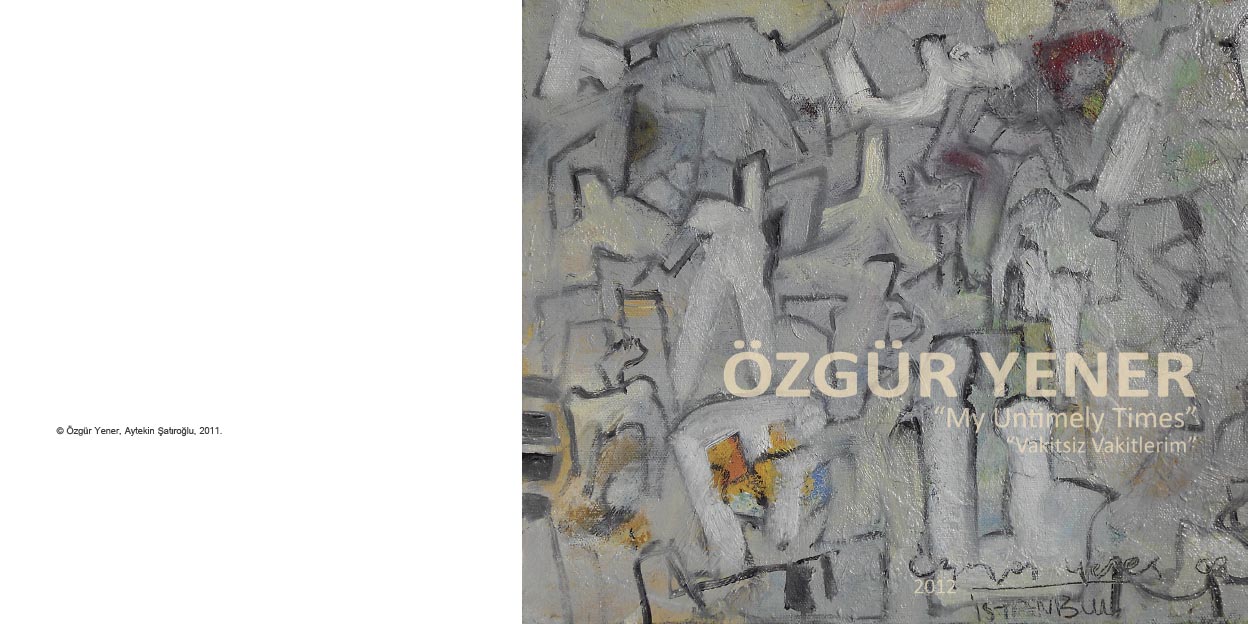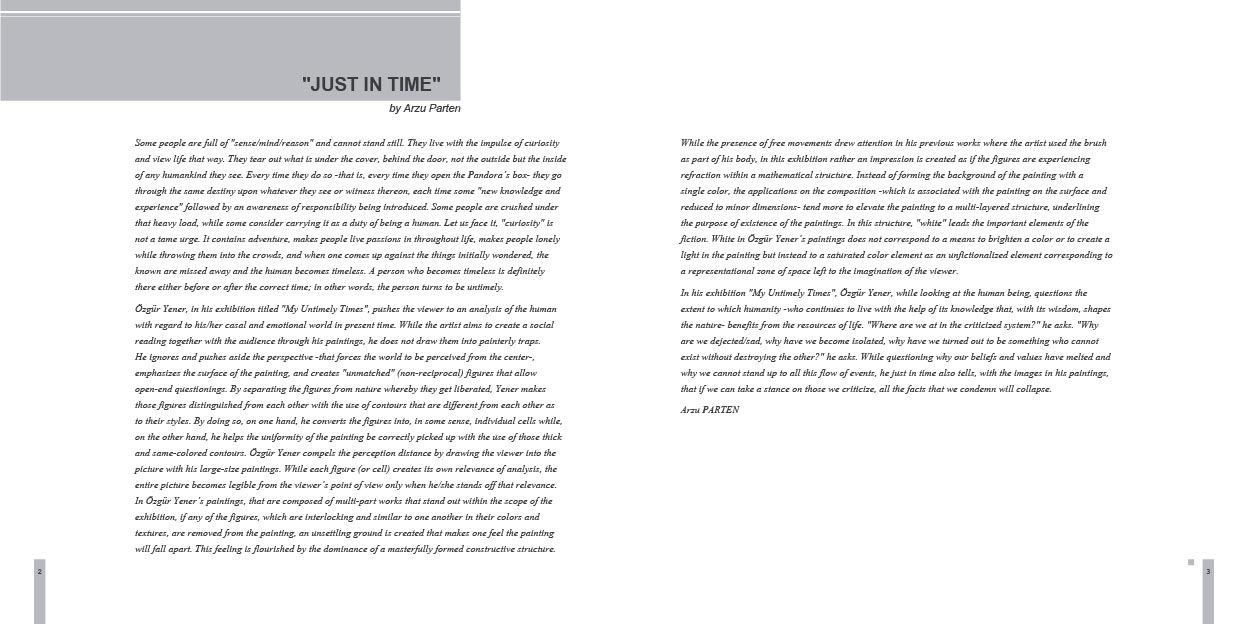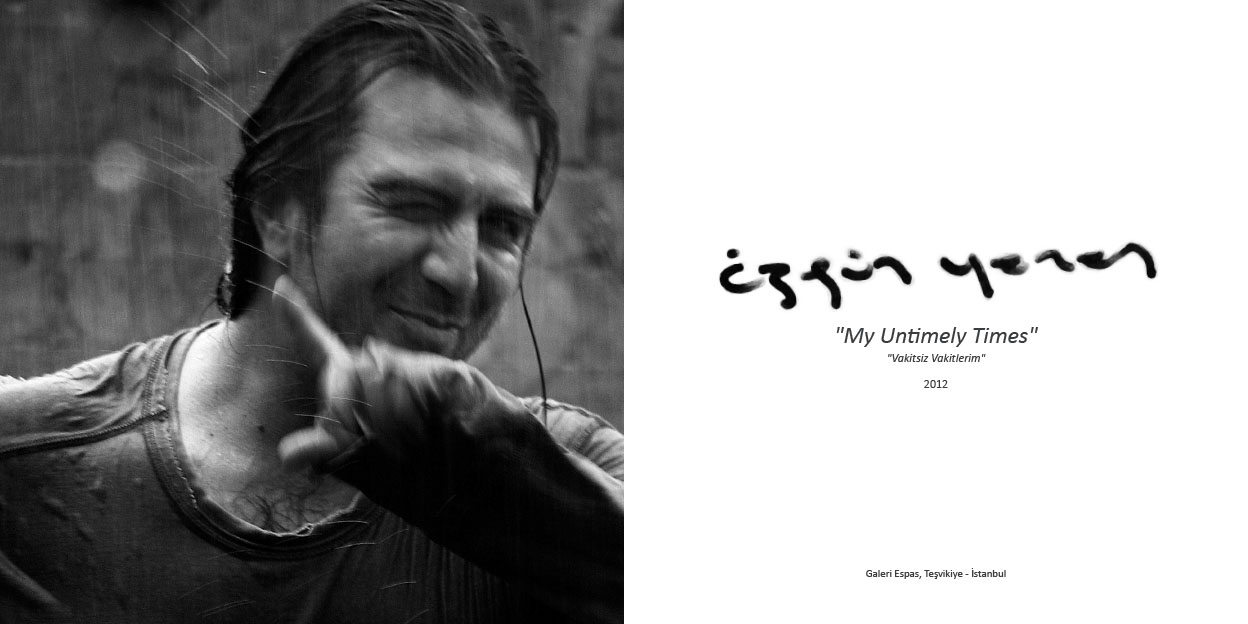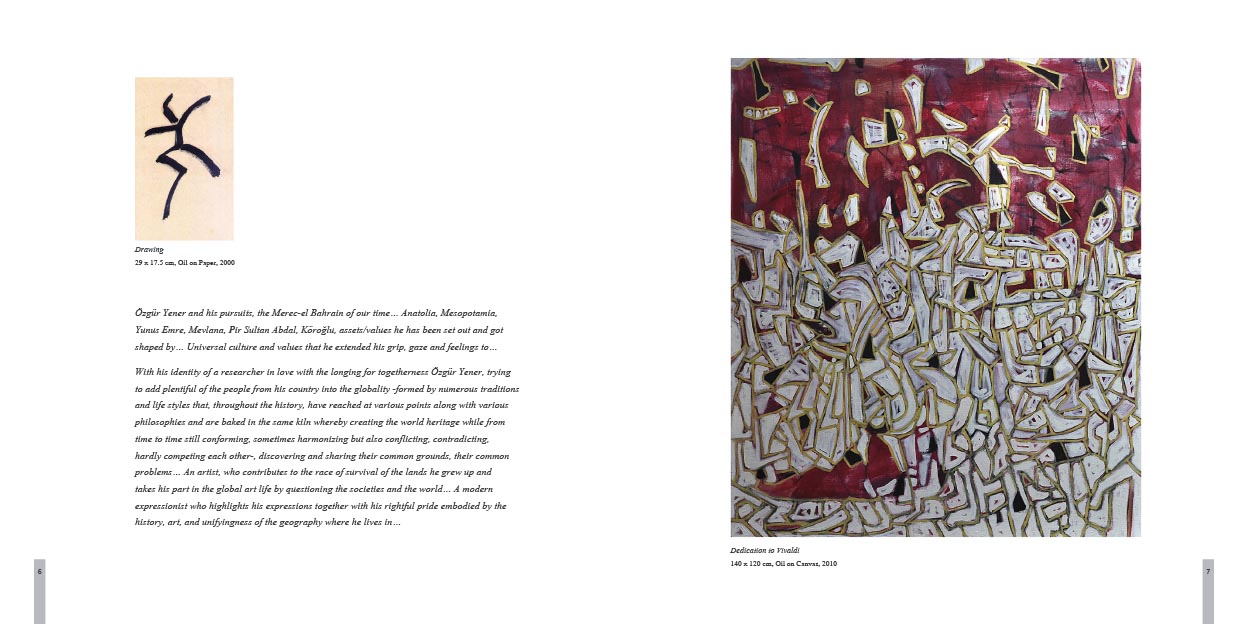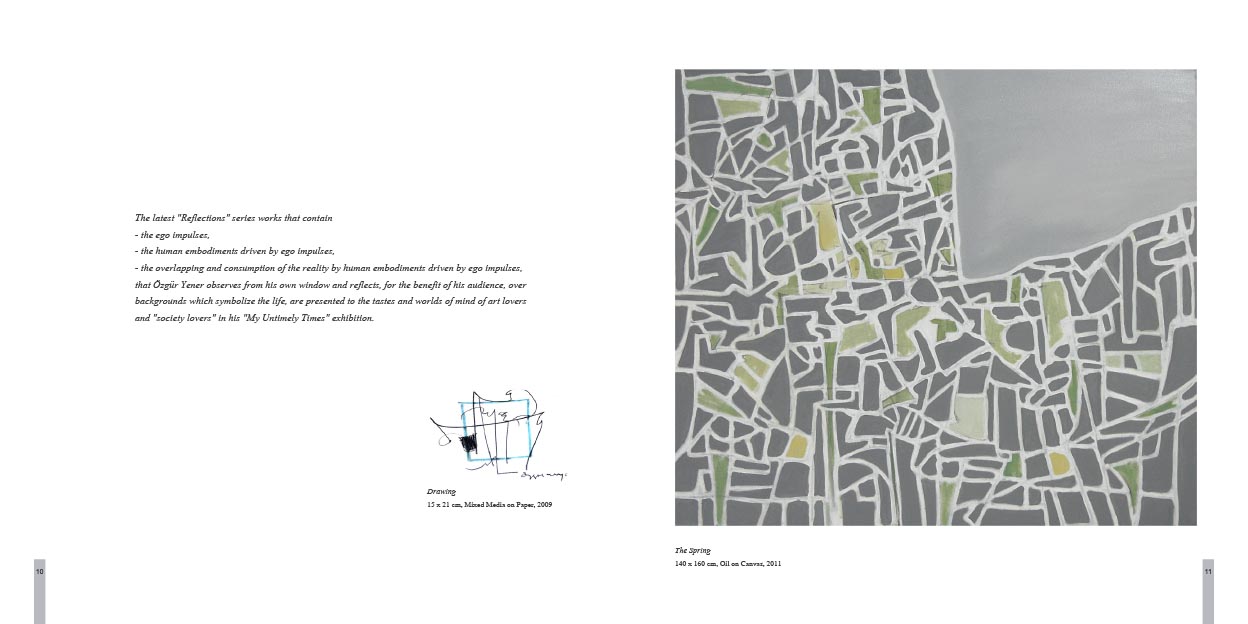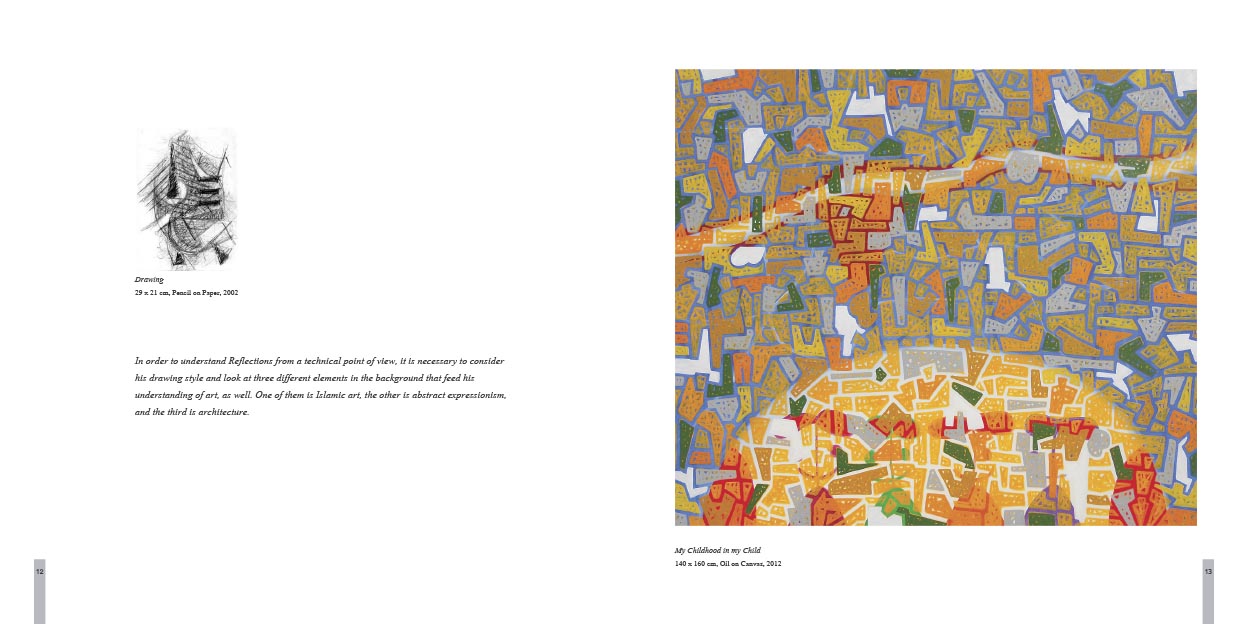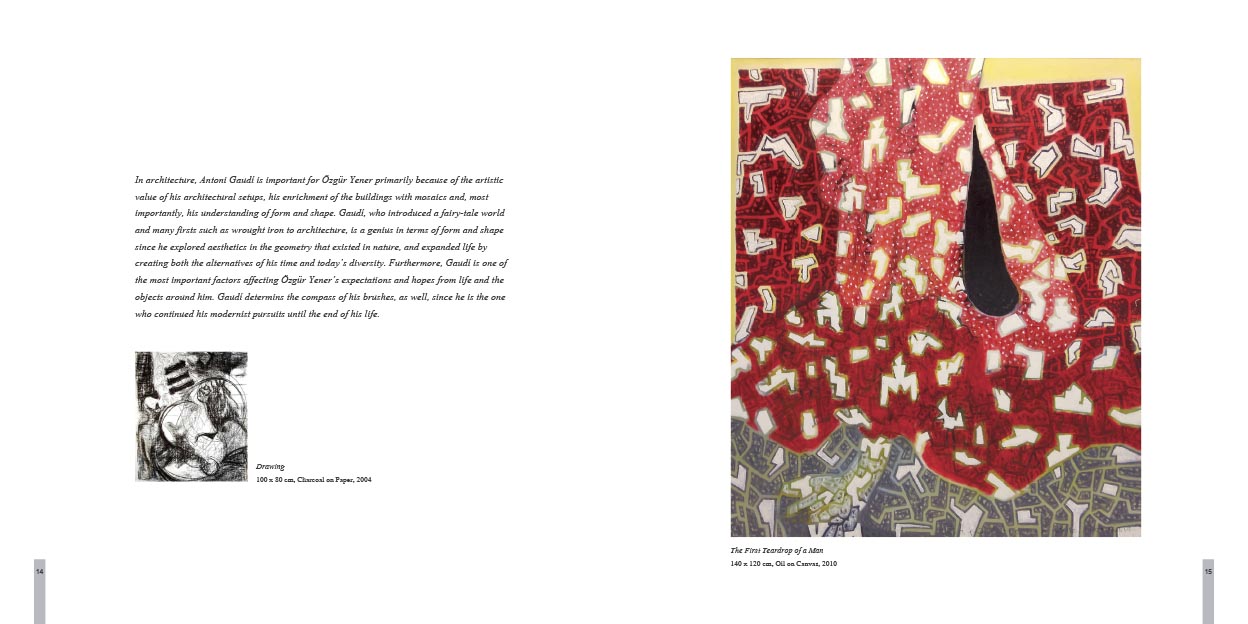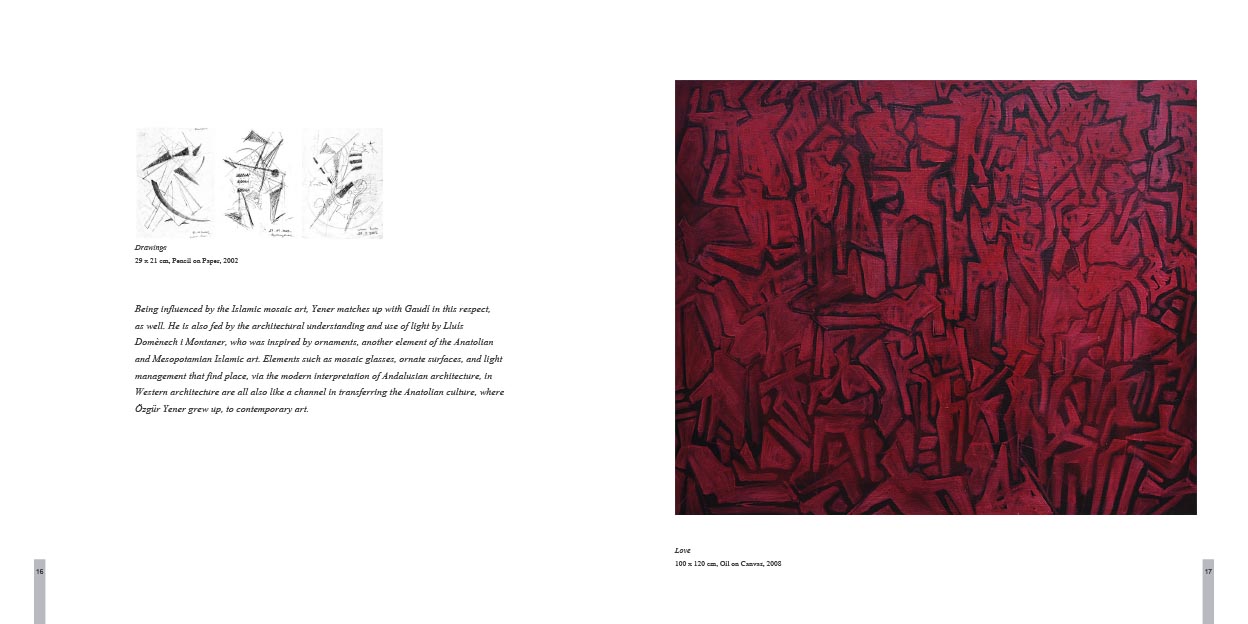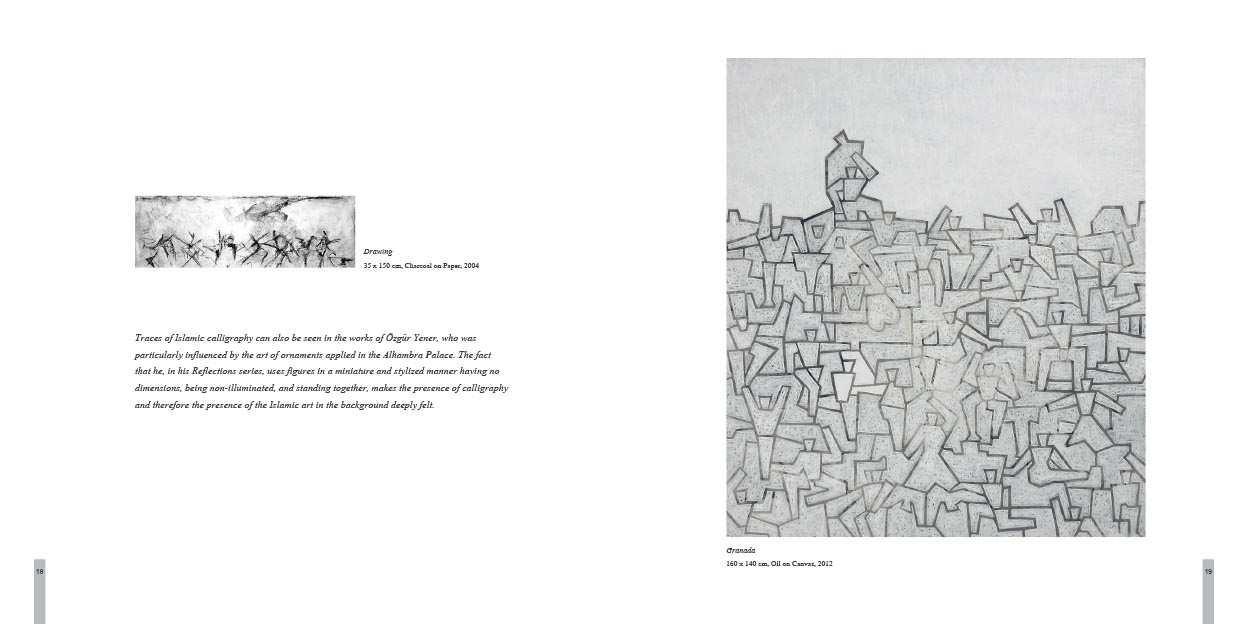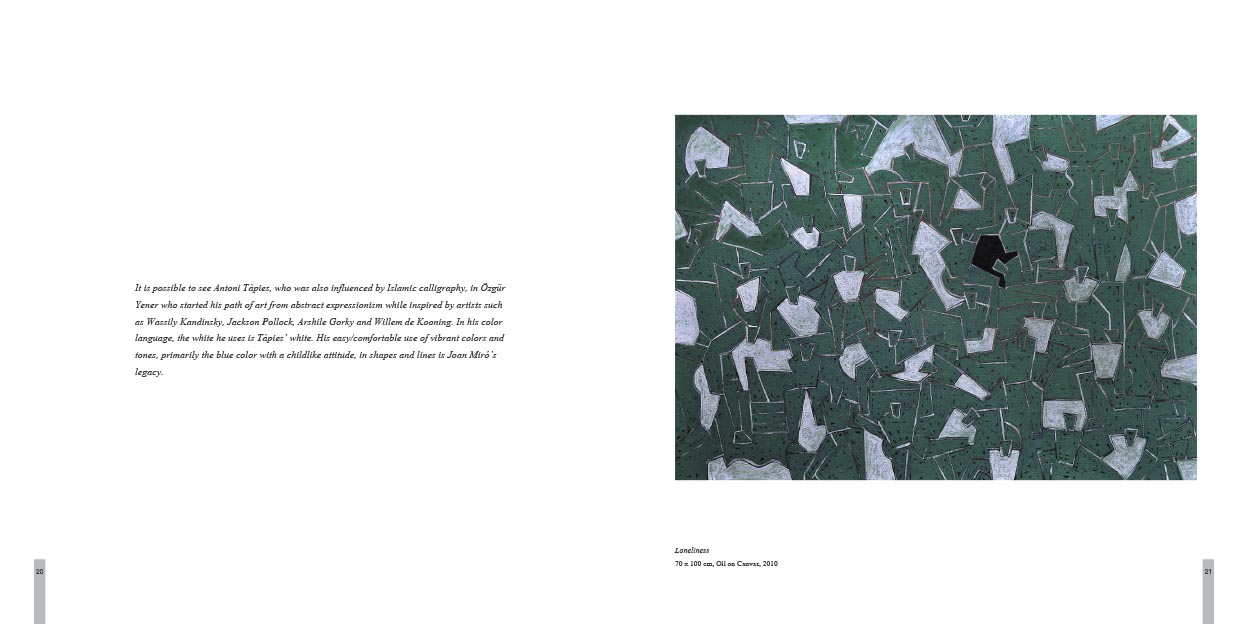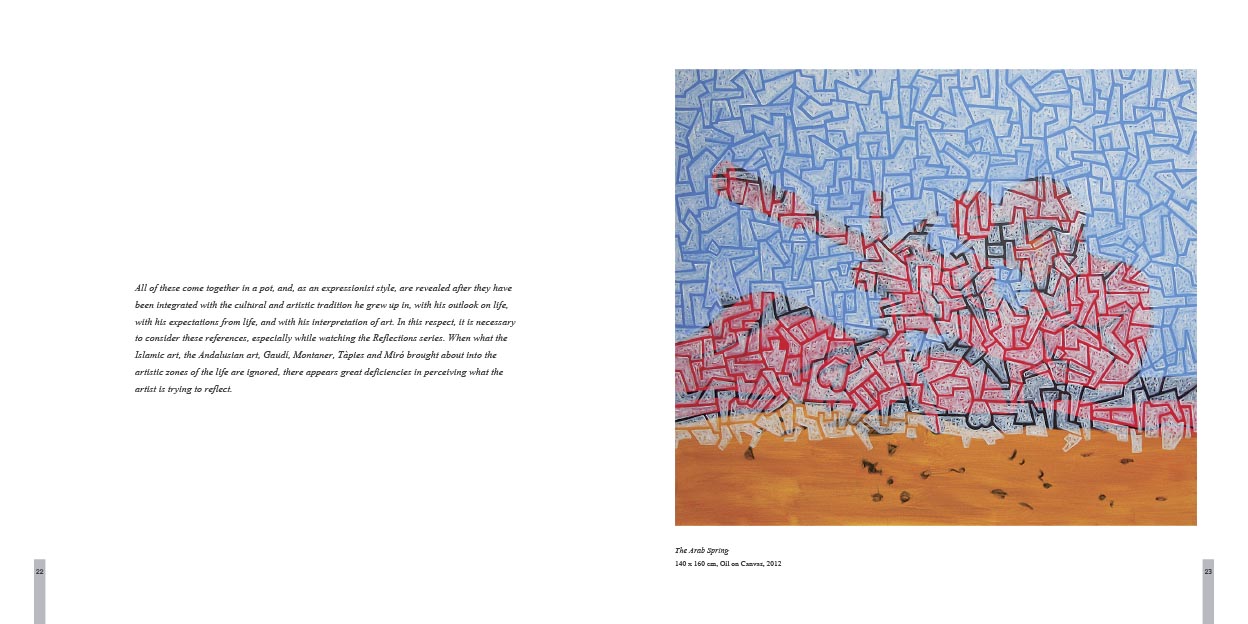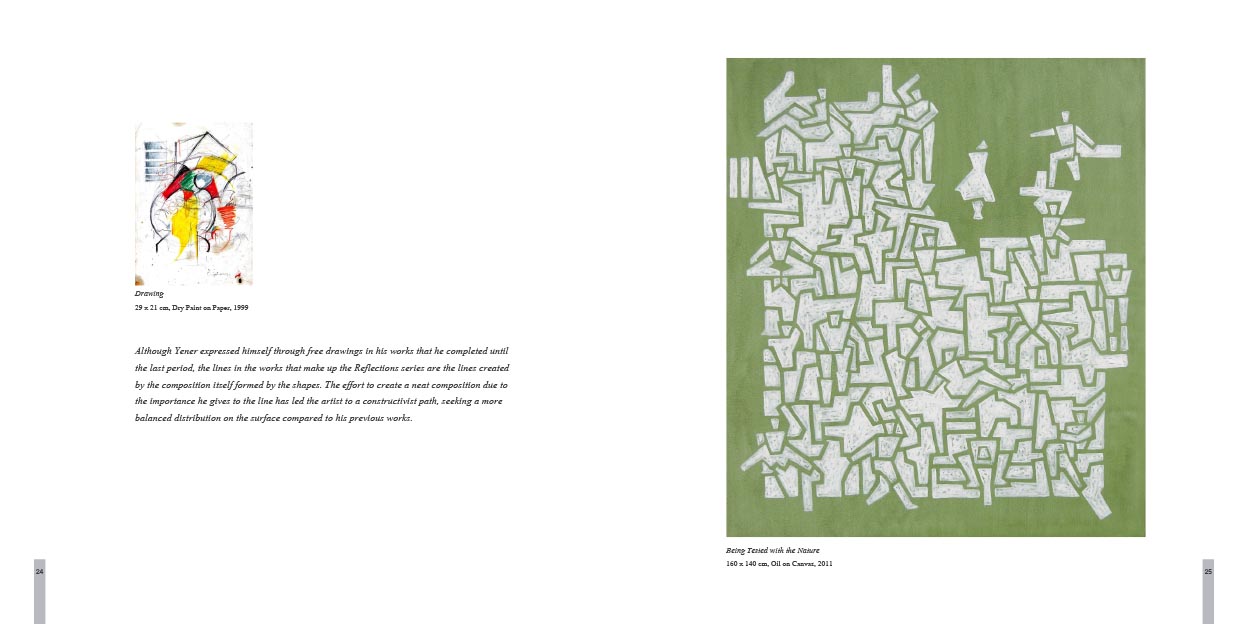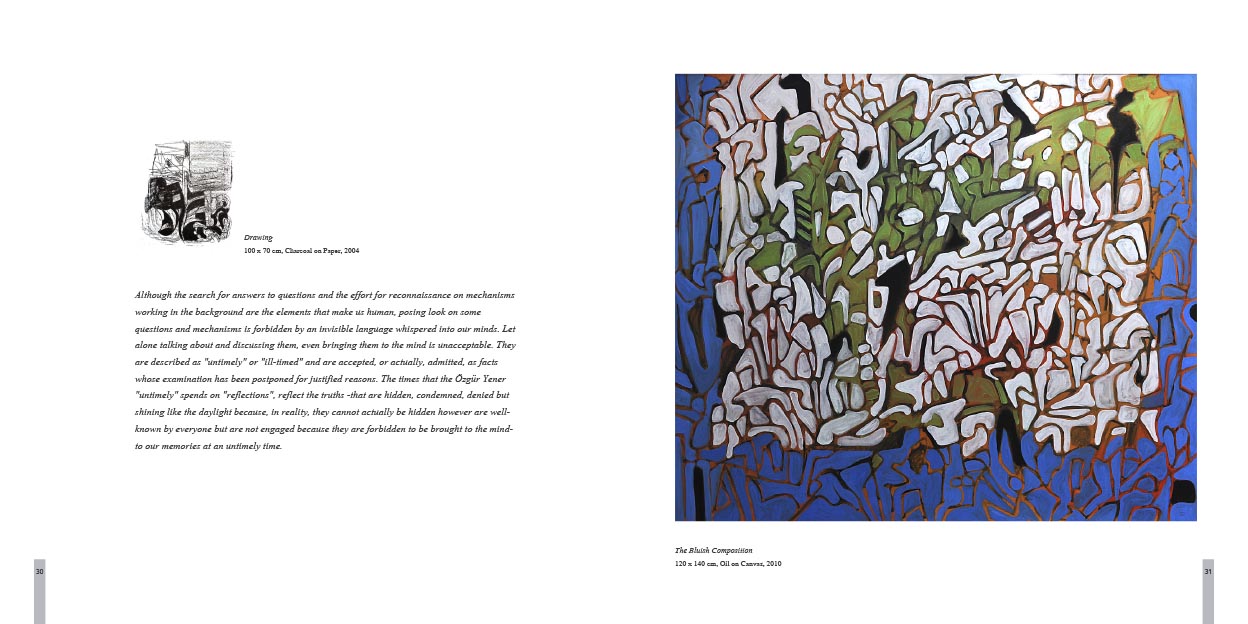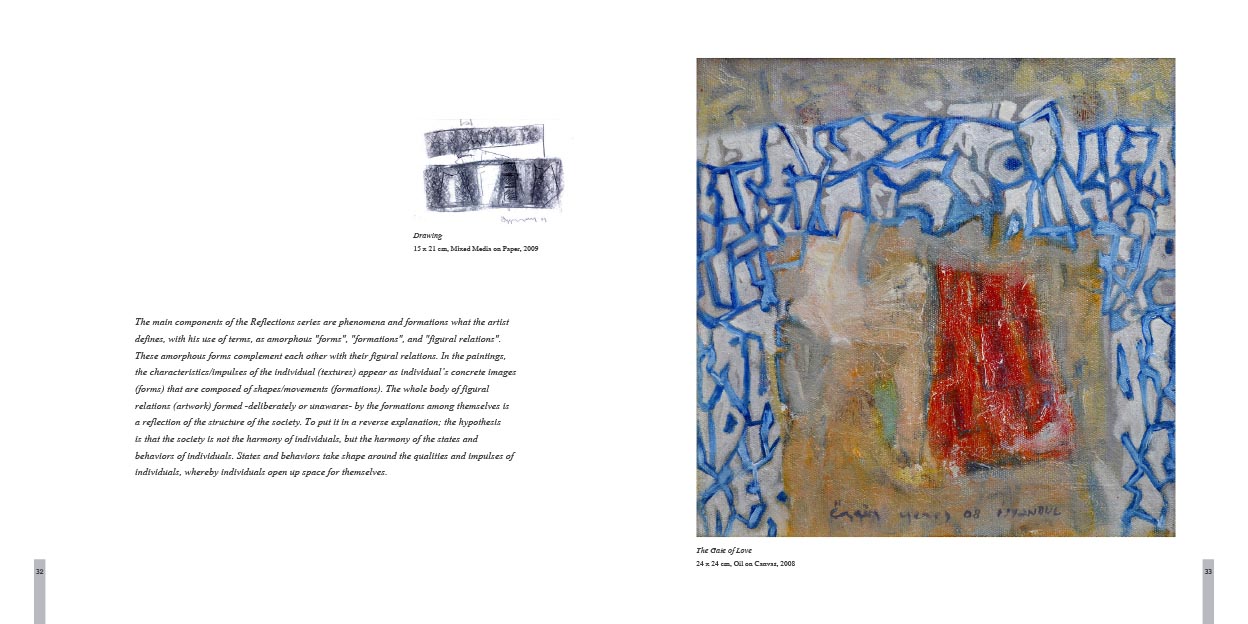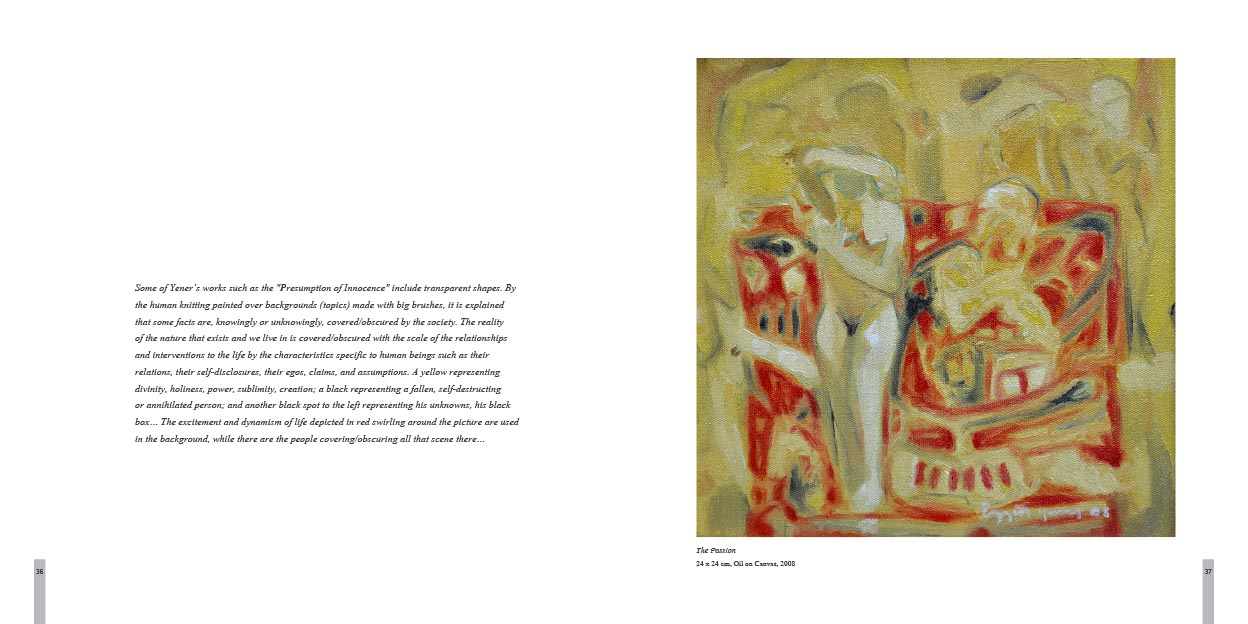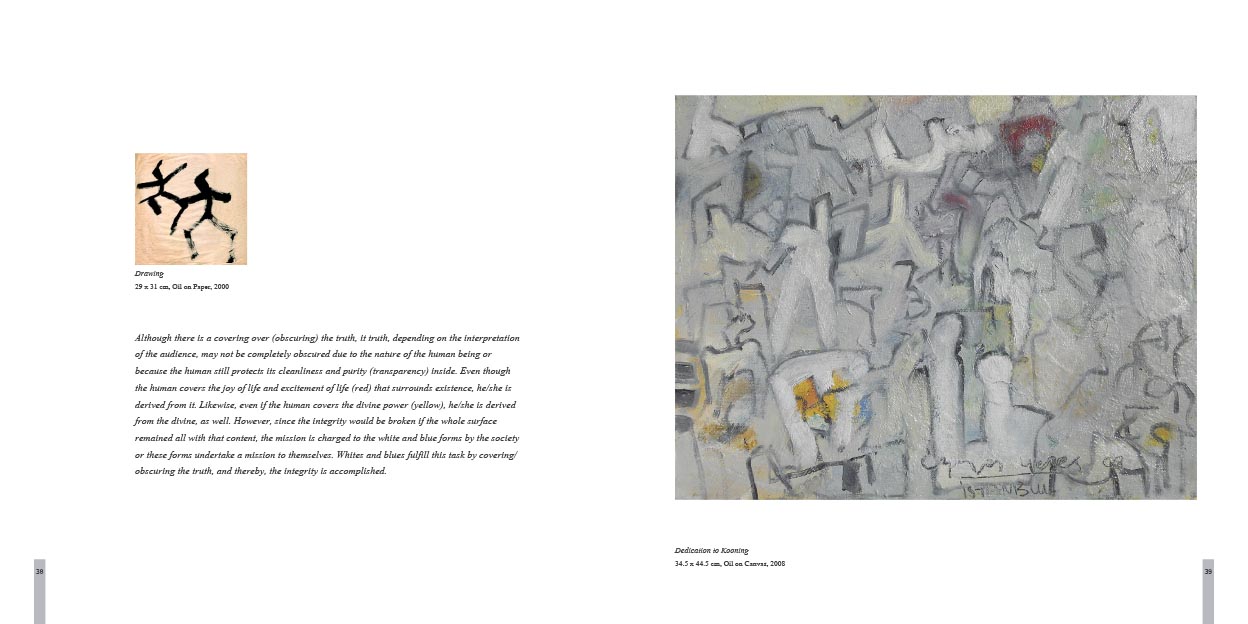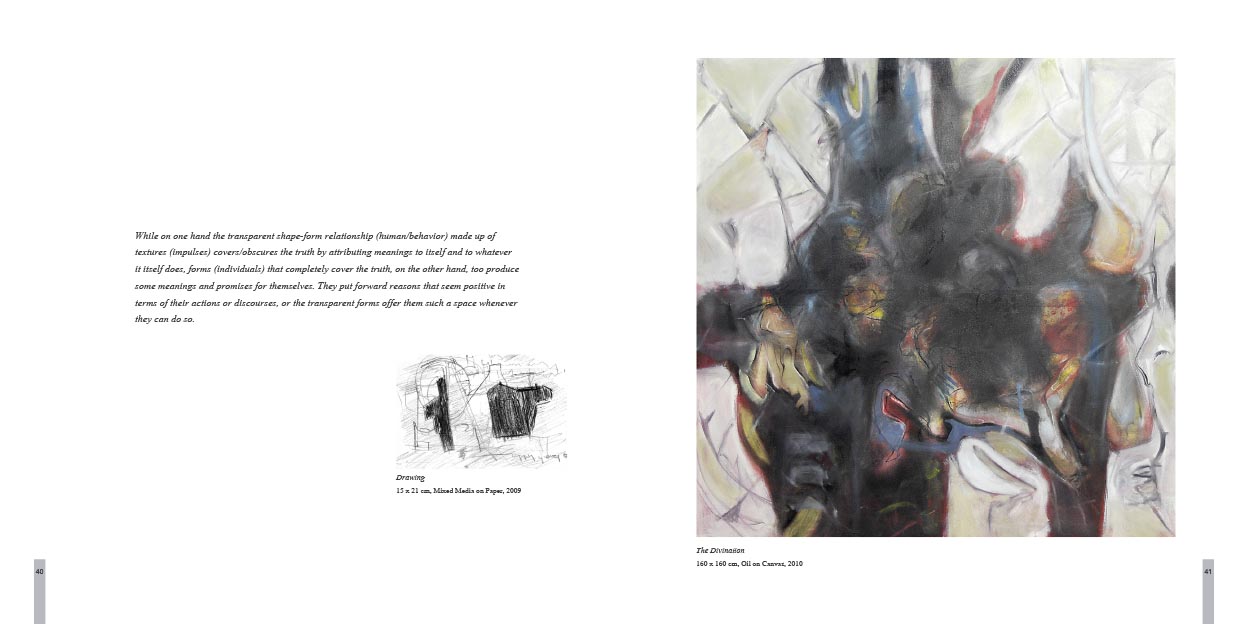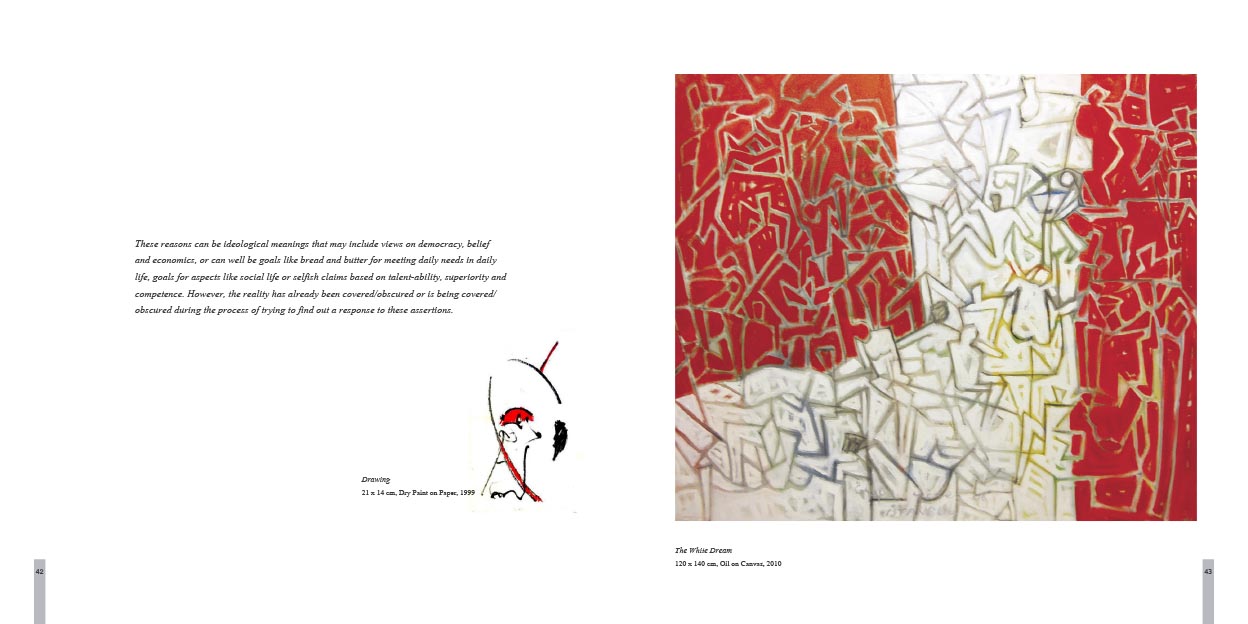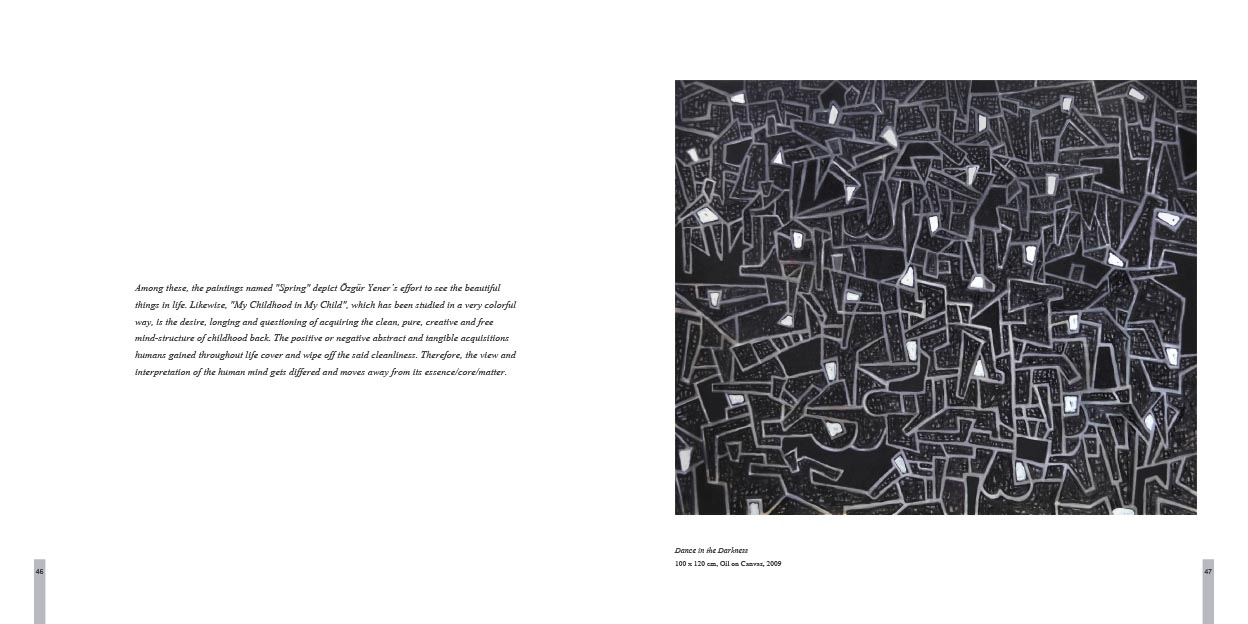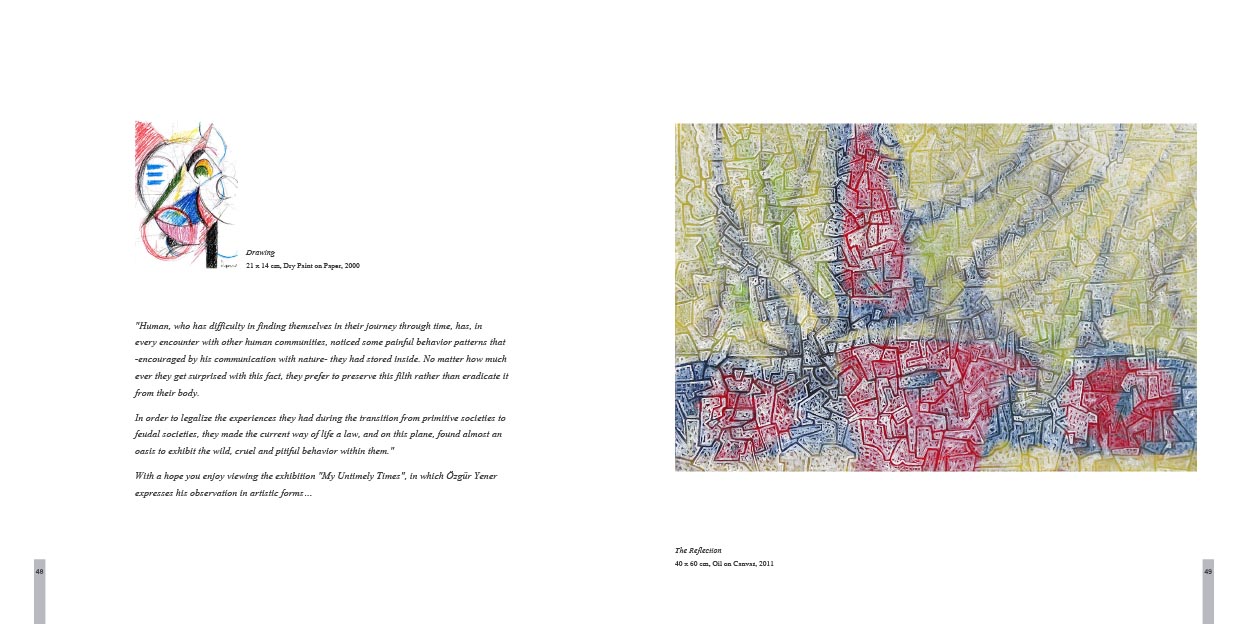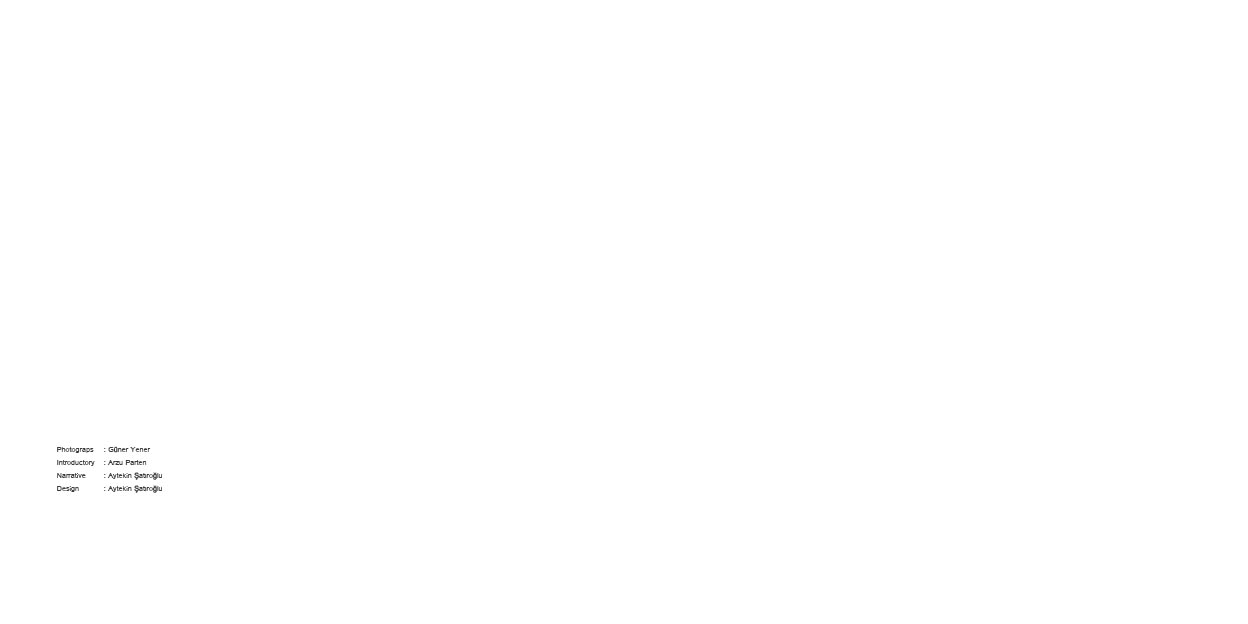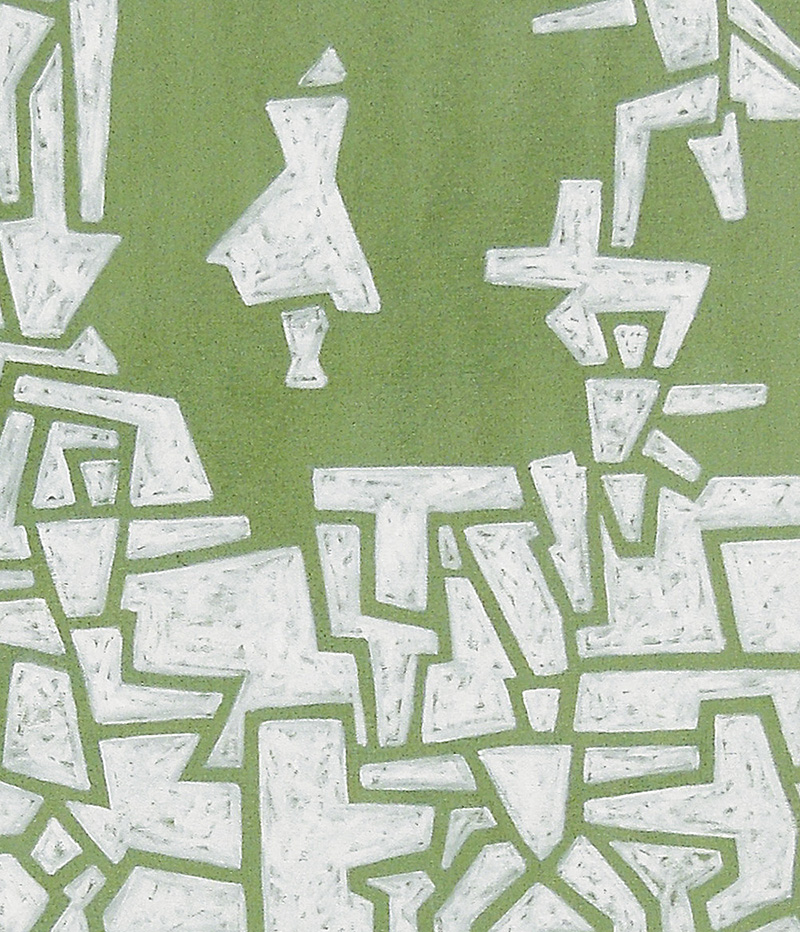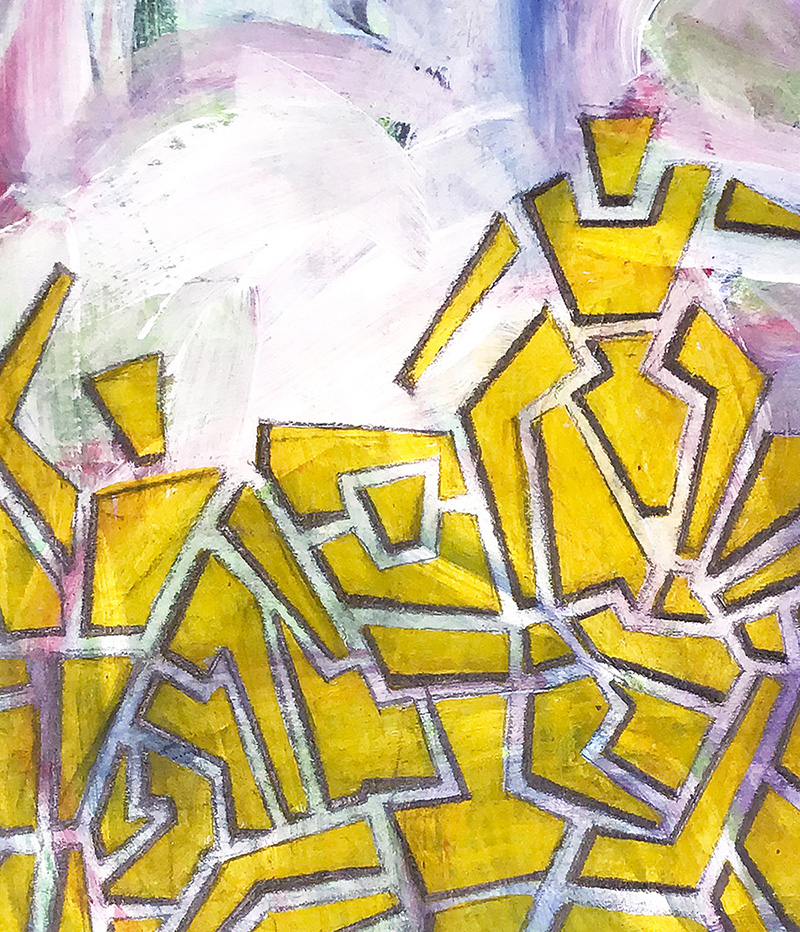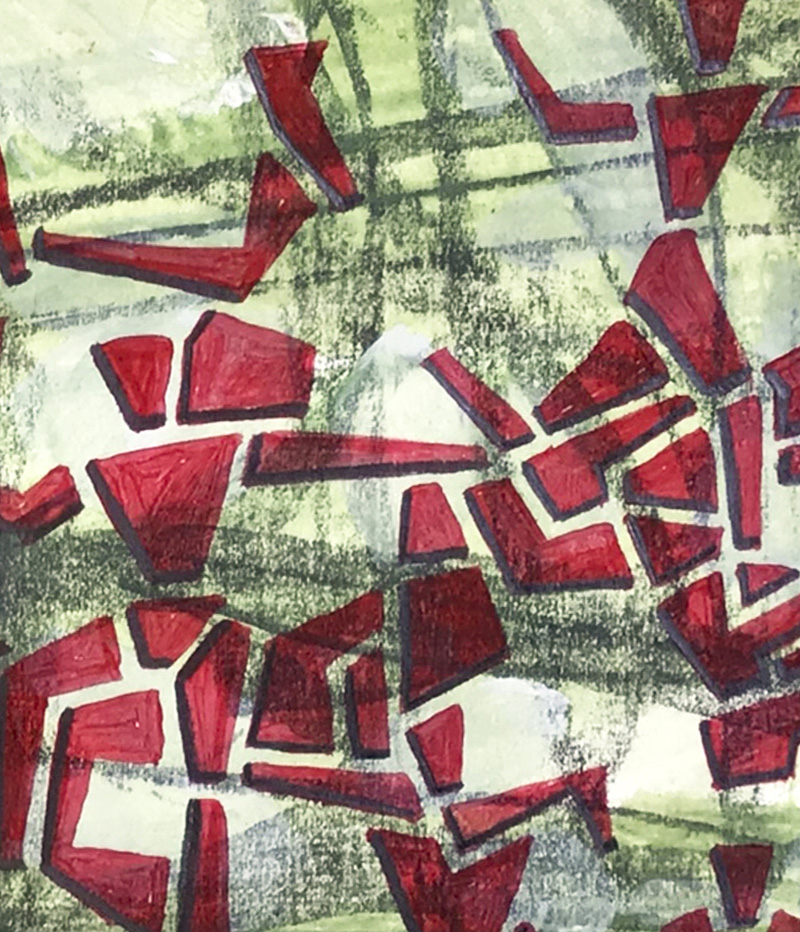![]()

![]()

JUST IN TIME
by Arzu Parten
Some people are full of "sense/mind/reason" and cannot stand still. They live with the impulse of curiosity and view life that way. They tear out what is under the cover, behind the door, not the outside but the inside of any humankind they see. Every time they do so -that is, every time they open the Pandora’s box- they go through the same destiny upon whatever they see or witness thereon, each time some "new knowledge and experience" followed by an awareness of responsibility being introduced. Some people are crushed under that heavy load, while some consider carrying it as a duty of being a human. Let us face it, "curiosity" is not a tame urge. It contains adventure, makes people live passions in throughout life, makes people lonely while throwing them into the crowds, and when one comes up against the things initially wondered, the known are missed away and the human becomes timeless. A person who becomes timeless is definitely there either before or after the correct time; in other words, the person turns to be untimely.
Özgür Yener, in his exhibition titled "My Untimely Times", pushes the viewer to an analysis of the human with regard to his/her casal and emotional world in present time. While the artist aims to create a social reading together with the audience through his paintings, he does not draw them into painterly traps. He ignores and pushes aside the perspective -that forces the world to be perceived from the center-, emphasizes the surface of the painting, and creates "unmatched" (non-reciprocal) figures that allow open-end questionings. By separating the figures from nature whereby they get liberated, Yener makes those figures distinguished from each other with the use of contours that are different from each other as to their styles. By doing so, on one hand, he converts the figures into, in some sense, individual cells while, on the other hand, he helps the uniformity of the painting be correctly picked up with the use of those thick and same-colored contours. Özgür Yener compels the perception distance by drawing the viewer into the picture with his large-size paintings. While each figure (or cell) creates its own relevance of analysis, the entire picture becomes legible from the viewer’s point of view only when he/she stands off that relevance. In Özgür Yener’s paintings, that are composed of multi-part works that stand out within the scope of the exhibition, if any of the figures, which are interlocking and similar to one another in their colors and textures, are removed from the painting, an unsettling ground is created that makes one feel the painting will fall apart. This feeling is flourished by the dominance of a masterfully formed constructive structure.
While the presence of free movements drew attention in his previous works where the artist used the brush as part of his body, in this exhibition rather an impression is created as if the figures are experiencing refraction within a mathematical structure. Instead of forming the background of the painting with a single color, the applications on the composition -which is associated with the painting on the surface and reduced to minor dimensions- tend more to elevate the painting to a multi-layered structure, underlining the purpose of existence of the paintings. In this structure, "white" leads the important elements of the fiction. White in Özgür Yener’s paintings does not correspond to a means to brighten a color or to create a light in the painting but instead to a saturated color element as an unfictionalized element corresponding to a representational zone of space left to the imagination of the viewer.
In his exhibition "My Untimely Times", Özgür Yener, while looking at the human being, questions the extent to which humanity -who continues to live with the help of its knowledge that, with its wisdom, shapes the nature- benefits from the resources of life. "Where are we at in the criticized system?" he asks. "Why are we dejected/sad, why have we become isolated, why have we turned out to be something who cannot exist without destroying the other?" he asks. While questioning why our beliefs and values have melted and why we cannot stand up to all this flow of events, he just in time also tells, with the images in his paintings, that if we can take a stance on those we criticize, all the facts that we condemn will collapse.
Arzu Parten
![]()

![]()

Özgür Yener and his pursuits, the Merec-el Bahrain of our time… Anatolia, Mesopotamia, Yunus Emre, Mevlana, Pir Sultan Abdal, Köroğlu, assets/values he has been set out and got shaped by… Universal culture and values that he extended his grip, gaze and feelings to…
With his identity of a researcher in love with the longing for togetherness Özgür Yener, trying to add plentiful of the people from his country into the globality -formed by numerous traditions and life styles that, throughout the history, have reached at various points along with various philosophies and are baked in the same kiln whereby creating the world heritage while from time to time still conforming, sometimes harmonizing but also conflicting, contradicting, hardly competing each other-, discovering and sharing their common grounds, their common problems… An artist, who contributes to the race of survival of the lands he grew up and takes his part in the global art life by questioning the societies and the world… A modern expressionist who highlights his expressions together with his rightful pride embodied by the history, art, and unifyingness of the geography where he lives in…
![]()

In his reflections of human abstractions in his recent paintings that he started in early 2000s with a different understanding and style, he tries to sum up within four-corner planes the deadlocks, dilemmas, sorrows, joys, hopes, expectations, things doable, things undoable that humankind experiences regardless of their region, country, or city, and, thereby, tries to formulate and convey to other people what he observes and lives through. It does not go unnoticed that his works are fostered by a deep-rooted research and by especially the Spanish heritage that he frequently visits where two lifestyles that left their mark on the world, or in other words, the two basic cultures that make up the present time, are blended. Yener defines the art as being dripped onto paintings with unused methods by employing his strong pattern approach, the gift of nature to him, in his inquiries as an outfit.
![]()

The latest "Reflections" series works that contain
- the ego impulses,
- the human embodiments driven by ego impulses,
- the overlapping and consumption of the reality by human embodiments driven by ego impulses,
that Özgür Yener observes from his own window and reflects, for the benefit of his audience, over backgrounds which symbolize the life, are presented to the tastes and worlds of mind of art lovers and "society lovers" in his "My Untimely Times" exhibition.
![]()

In order to understand Reflections from a technical point of view, it is necessary to consider his drawing style and look at three different elements in the background that feed his understanding of art, as well. One of them is Islamic art, the other is abstract expressionism, and the third is architecture.
![]()

In architecture, Antoni Gaudí is important for Özgür Yener primarily because of the artistic value of his architectural setups, his enrichment of the buildings with mosaics and, most importantly, his understanding of form and shape. Gaudí, who introduced a fairy-tale world and many firsts such as wrought iron to architecture, is a genius in terms of form and shape since he explored aesthetics in the geometry that existed in nature, and expanded life by creating both the alternatives of his time and today’s diversity. Furthermore, Gaudí is one of the most important factors affecting Özgür Yener’s expectations and hopes from life and the objects around him. Gaudí determins the compass of his brushes, as well, since he is the one who continued his modernist pursuits until the end of his life.
![]()

Being influenced by the Islamic mosaic art, Yener matches up with Gaudí in this respect, as well. He is also fed by the architectural understanding and use of light by Lluís Domènech i Montaner, who was inspired by ornaments, another element of the Anatolian and Mesopotamian Islamic art. Elements such as mosaic glasses, ornate surfaces, and light management that find place, via the modern interpretation of Andalusian architecture, in Western architecture are all also like a channel in transferring the Anatolian culture, where Özgür Yener grew up, to contemporary art.
![]()

Traces of Islamic calligraphy can also be seen in the works of Özgür Yener, who was particularly influenced by the art of ornaments applied in the Alhambra Palace. The fact that he, in his Reflections series, uses figures in a miniature and stylized manner having no dimensions, being non-illuminated, and standing together, makes the presence of calligraphy and therefore the presence of the Islamic art in the background deeply felt.
![]()

It is possible to see Antoni Tàpies, who was also influenced by Islamic calligraphy, in Özgür Yener who started his path of art from abstract expressionism while inspired by artists such as Wassily Kandinsky, Jackson Pollock, Arshile Gorky and Willem de Kooning. In his color language, the white he uses is Tàpies’ white. His easy/comfortable use of vibrant colors and tones, primarily the blue color with a childlike attitude, in shapes and lines is Joan Miró’s legacy.
![]()

All of these come together in a pot, and, as an expressionist style, are revealed after they have been integrated with the cultural and artistic tradition he grew up in, with his outlook on life, with his expectations from life, and with his interpretation of art. In this respect, it is necessary to consider these references, especially while watching the Reflections series. When what the Islamic art, the Andalusian art, Gaudí, Montaner, Tàpies and Miró brought about into the artistic zones of the life are ignored, there appears great deficiencies in perceiving what the artist is trying to reflect.
![]()

Although Yener expressed himself through free drawings in his works that he completed until the last period, the lines in the works that make up the Reflections series are the lines created by the composition itself formed by the shapes. The effort to create a neat composition due to the importance he gives to the line has led the artist to a constructivist path, seeking a more balanced distribution on the surface compared to his previous works.
![]()

![]()

When this quest was combined with critical questioning, all the elements in the Reflections series artworks had to be redrawn many times and the pieces that did not fit the theme had to be removed and the area they occupied had to reorganized in order to remedy the deficiency. This constant quest should also coincide with Yener’s appeal to the world from where he stands, from his social class, from his region, from his city, from his country, from his material-spiritual opportunities, from what he wanted to do but could not do, from his expectations from certain people, from wherever as to how the audience would interpret it.
![]()

Although the search for answers to questions and the effort for reconnaissance on mechanisms working in the background are the elements that make us human, posing look on some questions and mechanisms is forbidden by an invisible language whispered into our minds. Let alone talking about and discussing them, even bringing them to the mind is unacceptable. They are described as "untimely" or "ill-timed" and are accepted, or actually, admitted, as facts whose examination has been postponed for justified reasons. The times that the Özgür Yener "untimely" spends on "reflections", reflect the truths -that are hidden, condemned, denied but shining like the daylight because, in reality, they cannot actually be hidden however are well-known by everyone but are not engaged because they are forbidden to be brought to the mind- to our memories at an untimely time.
![]()

The main components of the Reflections series are phenomena and formations what the artist defines, with his use of terms, as amorphous "forms", "formations", and "figural relations". These amorphous forms complement each other with their figural relations. In the paintings, the characteristics/impulses of the individual (textures) appear as individual’s concrete images (forms) that are composed of shapes/movements (formations). The whole body of figural relations (artwork) formed -deliberately or unawares- by the formations among themselves is a reflection of the structure of the society. To put it in a reverse explanation; the hypothesis is that the society is not the harmony of individuals, but the harmony of the states and behaviors of individuals. States and behaviors take shape around the qualities and impulses of individuals, whereby individuals open up space for themselves.
![]()

When looked closely, it can be seen that each form assumes -with the confidence caused by the fact that each is composed of various textures- itself as an indispensable part of the whole or tries to be so. Indeed, when you pull out a form, and therefore a formation, from the work, the integrity of the work is lost and the neighboring forms tend to fall into the created space to fill in. Some forms, on the other hand, are distinguished behind objects as various parts of the human body in order to fill up the spaces and become pieces of the whole; in other words, they each become a piece of the society with their assertive aspects. That is because the reality and the non-human natural objects lying in the background should be obscured and minimized while the impulses (textures) that make up the person should come to the fore.
![]()

Some of Yener’s works such as the "Presumption of Innocence" include transparent shapes. By the human knitting painted over backgrounds (topics) made with big brushes, it is explained that some facts are, knowingly or unknowingly, covered/obscured by the society. The reality of the nature that exists and we live in is covered/obscured with the scale of the relationships and interventions to the life by the characteristics specific to human beings such as their relations, their self-disclosures, their egos, claims, and assumptions. A yellow representing divinity, holiness, power, sublimity, creation; a black representing a fallen, self-destructing or annihilated person; and another black spot to the left representing his unknowns, his black box… The excitement and dynamism of life depicted in red swirling around the picture are used in the background, while there are the people covering/obscuring all that scene there…
![]()

Although there is a covering over (obscuring) the truth, it truth, depending on the interpretation of the audience, may not be completely obscured due to the nature of the human being or because the human still protects its cleanliness and purity (transparency) inside. Even though the human covers the joy of life and excitement of life (red) that surrounds existence, he/she is derived from it. Likewise, even if the human covers the divine power (yellow), he/she is derived from the divine, as well. However, since the integrity would be broken if the whole surface remained all with that content, the mission is charged to the white and blue forms by the society or these forms undertake a mission to themselves. Whites and blues fulfill this task by covering/obscuring the truth, and thereby, the integrity is accomplished.
![]()

While on one hand the transparent shape-form relationship (human/behavior) made up of textures (impulses) covers/obscures the truth by attributing meanings to itself and to whatever it itself does, forms (individuals) that completely cover the truth, on the other hand, too produce some meanings and promises for themselves. They put forward reasons that seem positive in terms of their actions or discourses, or the transparent forms offer them such a space whenever they can do so.
![]()

These reasons can be ideological meanings that may include views on democracy, belief and economics, or can well be goals like bread and butter for meeting daily needs in daily life, goals for aspects like social life or selfish claims based on talent-ability, superiority and competence. However, the reality has already been covered/obscured or is being covered/obscured during the process of trying to find out a response to these assertions.
![]()

Özgür Yener, who has questioned "Death" for a while in his previous works, shows an effort, in his art, to research and reveal the real components of life. It is not a coincidence that this effort intersects with his outlook on life and his pursuits in life. Along with the works, his quests also mature, and this is reflected in the his involvement in the struggle for life. In this respect, it is an inevitable result that some artworks have their own stories in addition to the general theme.
![]()

Among these, the paintings named "Spring" depict Özgür Yener’s effort to see the beautiful things in life. Likewise, "My Childhood in My Child", which has been studied in a very colorful way, is the desire, longing and questioning of acquiring the clean, pure, creative and free mind-structure of childhood back. The positive or negative abstract and tangible acquisitions humans gained throughout life cover and wipe off the said cleanliness. Therefore, the view and interpretation of the human mind gets differed and moves away from its essence/core/matter.
![]()

"Human, who has difficulty in finding themselves in their journey through time, has, in every encounter with other human communities, noticed some painful behavior patterns that -encouraged by his communication with nature- they had stored inside. No matter how much ever they get surprised with this fact, they prefer to preserve this filth rather than eradicate it from their body.
In order to legalize the experiences they had during the transition from primitive societies to feudal societies, they made the current way of life a law, and on this plane, found almost an oasis to exhibit the wild, cruel and pitiful behavior within them."
With a hope you enjoy viewing the exhibition "My Untimely Times", in which Özgür Yener expresses his observation in artistic forms…
![]()



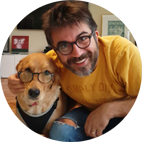



























 In my works that I exhibited in my "My Timeless (Ill-Timed) Times" exhibition in 2012 with the term "reflections", I symbolized the integrity/indivisibility of the society, and basically expressed three phenomena: the ego impulses, the human embodiments driven by the ego impulses, and the obscurity and the consumption of the pure reality and of the nature by the human embodiments. The arithmetic balance enjoyed on canvases depends on the existence of all of the human embodiments.
In my works that I exhibited in my "My Timeless (Ill-Timed) Times" exhibition in 2012 with the term "reflections", I symbolized the integrity/indivisibility of the society, and basically expressed three phenomena: the ego impulses, the human embodiments driven by the ego impulses, and the obscurity and the consumption of the pure reality and of the nature by the human embodiments. The arithmetic balance enjoyed on canvases depends on the existence of all of the human embodiments. The impulses (drives) that generate for the reason of being alive dismantle space and time. This disintegration caused by the interactions among the impulses turns the existence to understandable and makes the human an entity that questionize themselves. I contribute to the said questioning with the network theory that I have formulated on my own observations. On my thesis of "contingency and affectivity" (state of being adjacent and influencing), I express that the human, ironically, despite their said quizziness, legalizes a structure formed just by egos and, thereby, stretches and destroys the "array".
The impulses (drives) that generate for the reason of being alive dismantle space and time. This disintegration caused by the interactions among the impulses turns the existence to understandable and makes the human an entity that questionize themselves. I contribute to the said questioning with the network theory that I have formulated on my own observations. On my thesis of "contingency and affectivity" (state of being adjacent and influencing), I express that the human, ironically, despite their said quizziness, legalizes a structure formed just by egos and, thereby, stretches and destroys the "array". In a context where the word "array" can be translated into the daily language as a sequential table containing items that improve and assist one another, each element of the "array" –that is, the individuals- do, because they are just the elements of the array, own unique missions. However, actions required by those missions need specific amounts of radii. The radii cause individuals to depart from each other whereby what we call the society is formed.
In a context where the word "array" can be translated into the daily language as a sequential table containing items that improve and assist one another, each element of the "array" –that is, the individuals- do, because they are just the elements of the array, own unique missions. However, actions required by those missions need specific amounts of radii. The radii cause individuals to depart from each other whereby what we call the society is formed. As one can see, certain organs that belong to some groups of individuals of the array who tender crowdedness and turbulence are in extreme hustle setting up individuals' egotism at excessive levels. Some organs of some individuals, however, are dull, cannot find a room, or are wiped out, run over by an organ of a more dominant individual. Attempting to add required room in order to eliminate this situation may extinguish the balance, the society, because, with the existing state, individuals have built up a dynamic "network" among themselves and can perform their role with the help of others. This compulsory asymmetric contingency and affectivity, as a result, obscures and consumes the pure reality and the reality of nature.
As one can see, certain organs that belong to some groups of individuals of the array who tender crowdedness and turbulence are in extreme hustle setting up individuals' egotism at excessive levels. Some organs of some individuals, however, are dull, cannot find a room, or are wiped out, run over by an organ of a more dominant individual. Attempting to add required room in order to eliminate this situation may extinguish the balance, the society, because, with the existing state, individuals have built up a dynamic "network" among themselves and can perform their role with the help of others. This compulsory asymmetric contingency and affectivity, as a result, obscures and consumes the pure reality and the reality of nature. The creation of the artworks contains a search for geometricizing the social pressures and rudeness. As a consequence of the search, arithmetic bursts as edges of the objects are applications that I have dared after calculations and try-outs in a manner not ever done before. While I paint the society-individual formation I observe in a constructive perception and in a conventional attitude, I apply the white color, which is not acknowledged as a color at all, in a wild manner. Thereby, my artworks within the concept of my thesis convey how much at a reverse position of the general opinion I have arrived.
The creation of the artworks contains a search for geometricizing the social pressures and rudeness. As a consequence of the search, arithmetic bursts as edges of the objects are applications that I have dared after calculations and try-outs in a manner not ever done before. While I paint the society-individual formation I observe in a constructive perception and in a conventional attitude, I apply the white color, which is not acknowledged as a color at all, in a wild manner. Thereby, my artworks within the concept of my thesis convey how much at a reverse position of the general opinion I have arrived.